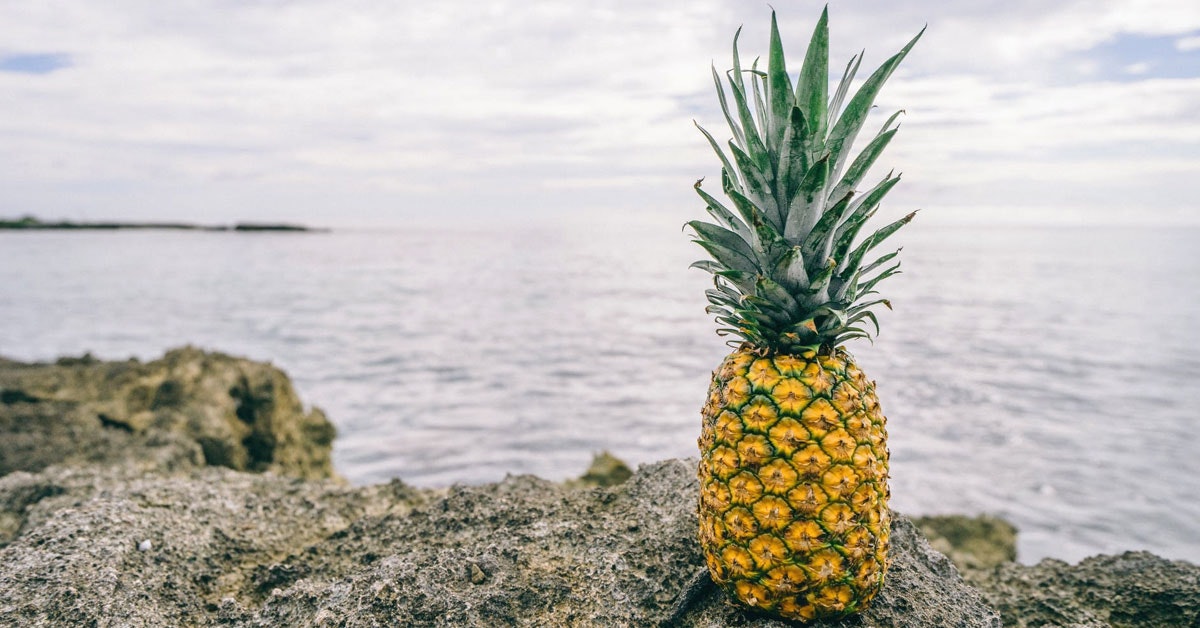Pineapples are truly one of the hardest fruits to figure out. Are they ripe? Too ripe? Or not ripe enough?
It can be quite a gamble picking a pineapple in the produce section, which is why you’ll often find people with confused looks in front of the pineapples at the grocery store.
To pick the perfect ripe pineapple, there are a few things you need to look for. Keep reading to get the know-how for selecting a fresh pineapple!
Here’s what we’ll cover:
- Pineapple Seasons
- Ripe Pineapple Color
- Feel
- The Weight of a Ripe vs Unripe Pineapple
- The Smell of a Ripe Pineapple
- Storing Ripe Pineapples
Pineapple Seasons
As always, when selecting your pineapples, it’s recommended to buy them while they’re in season, which varies depending on where they were grown:
- Hawaiian pineapples are ripe from April to May.
- Pineapples grown in the Caribbean are ripe in both December to February and August to September.
- Pineapples in Costa Rica are grown year round!
Buying in season is not only cost-effective, but it provides you with the best pineapple at its peak ripeness (which will help your juice taste and look amazing!).

Now, let’s get into the specifics of picking a ripe pineapple at the store.
Ripe Pineapple Color
Pineapples can range in color all the way from green to golden-yellow, and orange.
As a general rule, the more yellow a pineapple’s exterior, the riper the fruit will be. If the pineapple is all yellow, this may indicate that it’s reaching the end of its life. That said, green pineapples can still be ripe. This is what their farmers call “green-shell ripe.”
When choosing the ideal pineapple, search for one that has strong green leaves on the crown. You should also look for a bit of yellow color around the crown of the pineapple. We understand that color alone can be a bit confusing, which is why you should pay attention to the next few tips!
Feel
Feel around the pineapple to see if there are any mushy or extremely soft spots. Mushy spots typically indicate that the pineapple may be rotten or going bad. Your pineapple should remain strong with a bit of softness (but not too much) for the ideal ripeness.
The Weight of a Ripe vs Unripe Pineapple
If your selection passed the first two tests, pick it up and hold it in your hand to feel the weight. Typically when it comes to juicy fruits, you want he heaviest one possible. Heavy fruit means more juice.

The Smell of a Ripe Pineapple
When you think you have the perfect candidate to take home, smell the bottom of the pineapple for the final test. The fruit should smell ripe, sweet, and tropical. If your pineapple smells fermented, with a hint of vinegar, that means your pineapple may be traveling to the dark side. If your pineapple has passed this test, it’s a good sign!
Pro-tip: If you choose a pineapple that is not as ripe as you’d prefer, cut off the top of the pineapple and place the cut top side down on a plate, place in the fridge for around 2-3 days, then enjoy!
Related juice recipe: Rosemary Pineapple Juice with Orange & Lemon.
Storing Ripe Pineapples
If you’re not ready to cut into your pineapple just yet, it’s recommended to leave it on your counter at room temperature for around 2-3 days. Your pineapple may change color, so always keep an eye on it — no one wants to eat an overripe pineapple!
Finding the right ripe pineapple can still be difficult for well-trained professionals. After some time to practice, you’ll nail it!
If you’re interested in a delicious juice recipe with pineapple, check out our anti-inflammatory juice!
Want to browse a variety of chef-made juicing recipes? Check out our juicing recipes here!



Comment